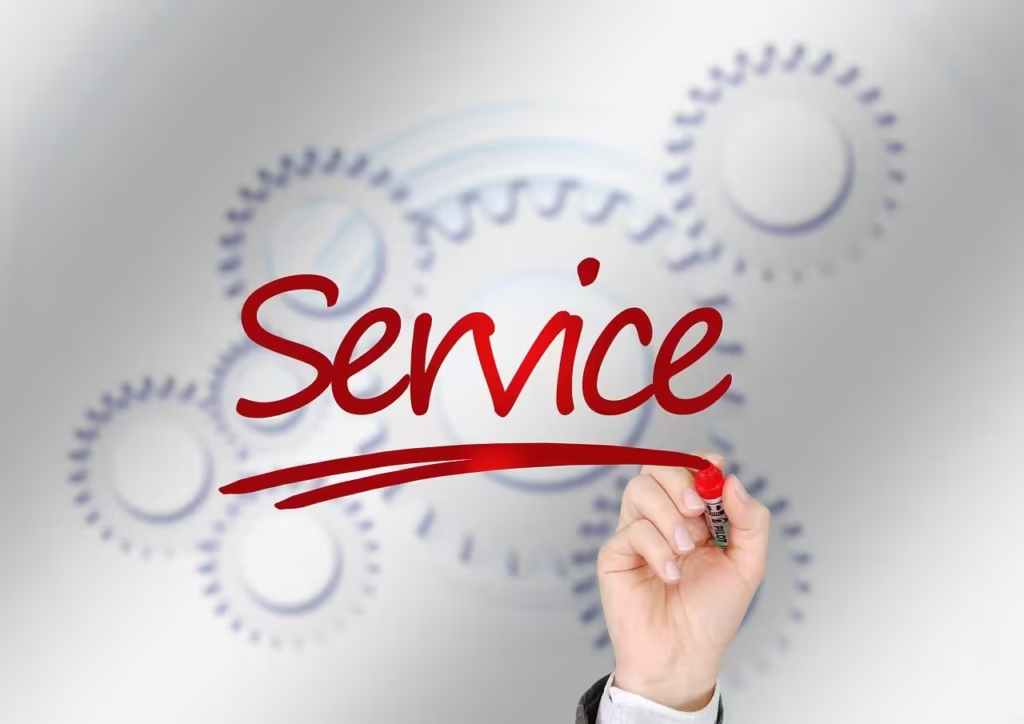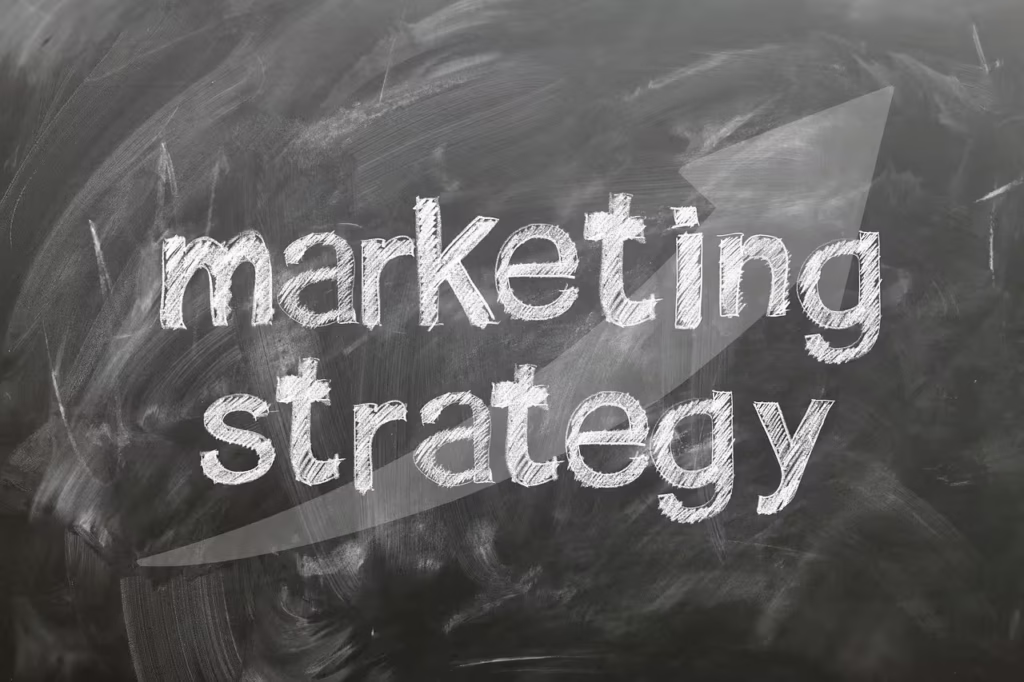What is service marketing? The service marketing is the science and art of marketing services, which are inherently intangible experiences compared to physical products.
For companies like consultancies, agencies, healthcare providers, and hospitality operators, service marketing emphasizes communication, customer experience, and building trust to engage individual customers and organizations.
This guide addresses:
- Definition of service marketing in marketing management
- Characteristics that distinguish it from product marketing
- The service marketing mix (7 P’s)
- The service marketing triangle framework
- Why service marketing matters and how it drives business growth?
Knowing what service marketing is will ensure that you build trust, wow your customers, and foster repeat business if you have a digital agency, a consultancy, a hospitality company, or a fintech business. So let’s get started.
1. Defining Service Marketing in Marketing Management
Fundamentally, service marketing involves activities or processes that create value using experiences rather than physical products.
In marketing management, this translates to a change from displaying product details to illustrating the advantages of collaborating with your team, the ease you provide, and the trust you establish.
Service marketers concentrate on all contact points, from prospective customers’ initial research, through staff alignment, internal service marketing, and the final delivery of services to clients.
2. Main Features of Service Marketing

Service marketing is different from product marketing due to these five central characteristics:
1. Intangibility: You can’t touch or experience a service before buying. Customers must trust your reputation, reviews, and brand promise.
2. Inseparability: Production and consumption tend to be concurrent. A customer is involved in delivering the service (consider a live consulting session or a haircut).
3. Variability: Quality of service may differ depending on who provides it, when, and where. Two consultants from the same organization might give slightly different services.
4. Perishability: Excess service capacity (such as vacant hotel rooms or available appointment times) cannot be preserved and will be lost for good if not used.
5. People Centric Delivery: Your staff and how they treat your customers are the service. Training, attitude, and empowerment of the staff have a direct influence on satisfaction.
Due to these characteristics, service businesses must craft marketing strategies based on human interaction, repeatable processes, and observable quality signs.
3. The Service Marketing Mix: Beyond the 4 P’s
To deal with the specific needs of services, marketers use an extended traditional marketing mix of seven essential components:
Product (Service)
In this context, “product” refers to the experience or result you provide, whether a digital marketing campaign, a spa experience, or an IT support bundle.
Price
Pricing is usually based on value models, subscription plans, or packages because customers can’t see the “ingredients” of a service before buying.
Place
Channels for delivering the service through online sites, in-person workshops, or combinations of these, decide upon accessibility and ease for your target market.
Promotion
Basing confidence upon use cases, testimonials, demos, and trials, content marketing and thought leadership can validate expertise more effectively than regular ads.
People
Your employees are frontline ambassadors. Internal service marketing training, incentives, and explicit values communication ensure employees continually live up to promises.
Process
Structured workflows (from onboarding through feedback loops) ensure every customer has a predictable, smooth ride, building trust.
Physical Evidence
Tangible indicators, branding on reports, sleek interfaces, tidy offices make intangible services tangible and trustworthy.
These seven Ps form an integrated scheme for developing successful service marketing strategies that exceed or meet customer expectations.
4. The Service Marketing Triangle: Bringing Company, Employees & Customers into Alignment
The service marketing triangle illustrates three essential relationships:
Internal Marketing (Company → Employees)
The company trains and rewards employees with tools and culture so they can confidently deliver the promise of the brand.
External Marketing (Company → Customers)
This is where you connect and advertise to your target audience through PR, social media, and events; the idea is to set appropriate expectations.
Interactive Marketing (Employees → Customers)
Here’s where the actual magic happens during the process of service delivery. Every touchpoint, good or bad, has a bearing on the brand perception and whether or not customers will return.
Suppose all three sides are set in motion and the staff is correctly trained. In that case, marketing communications are aligned to the experience, and customer experiences in furtherance of a well-marked brand, which is established as a strong brand worth turning to.
5. Why Service Marketing different from Product Marketing?
Knowing these differences will enable service businesses to modify their marketing strategies to meet the intangibility and variability troubling a customer.
6. Why Service Marketing is Important?

Establishing trust & loyalty
Without a product presented for physical inspection, trust is the medium. Thoughtful communications, efficient processes, and reliable delivery of services foster repeat business and word of mouth referrals.
Differentiation in an Overcrowded Market
The core products can look the same in most service industries, such as digital marketing, consulting, and hospitality. Standout service design and customer experience become the differentiators.
Greater Lifetime Value
Happy customers upgrade services, sign longer commitments, and refer you to colleagues. A strategy that encourages repeat business drives revenue way above one-time sales.
Positive Brand Reputation
Enduring service experiences reverberate in online feedback, social media updates, and professional networks, organically enhancing your brand’s visibility.
Adaptability & Innovation
Service firms that monitor feedback and optimize processes can quickly pivot to accommodate shifting customer needs, outpacing competition.
7. Developing Effective Service Marketing Strategies
To implement theory into reality, keep these expert suggestions in mind:
Map Your 7 P’s:
Conduct an audit of your current services marketing mix. Identify gaps, your physical evidence (branding materials) feels dated, or your pricing tiers confuse customers.
Internal Services Marketing
Develop and enfold staff into a brand environment by training them on brand values, customer personas, and service standards. Employees should be rewarded for great customer feedback.
Make Use of Storytelling
Client successes, before and after case studies, and behind-the-scenes content can make intangible services less abstract.
From Here to There
Write all the steps from inquiry through delivery to feedback, streamline them, and center the process as the customer will hopefully experience it around the customer. Automated reminders and a progress dashboard provide visibility.
Concrete Proof Points
Online services may display branded reports, slick dashboards, or certification badges as evidence of service quality.
Feedback & Iterate
Ask customers regularly about satisfaction and possible improvements. Then use this feedback to better your services and sustain relationships.
Conclusion on what is service marketing?
Service marketing is a specialized field that extends far beyond traditional product promotion.
By dealing with the nature of services’ intangibility, inseparability, variability, and perishability and applying the 7 Ps and the service marketing triangle, companies can develop customer-centric strategies that establish trust, create delight for clients, and promote sustainable growth.
In an economy where experiences tend to mean more than tangible products, optimizing your service marketing strategy is no longer an option; it’s a competitive imperative.
Frequently Asked Questions Regarding What is Service Marketing?
Below are the answers to the most asked queries on the internet regarding service marketing.
Q1. What is service marketing in marketing management?
Service marketing in marketing management encompasses promoting and serving intangible products such as consulting, design, or support to establish trust, manage customer experiences, and influence client satisfaction.
Q2. What is service marketing, and what are its characteristics?
Service marketing is a marketing technique developed for variable, perishable, intangible services and frequently involves customer involvement. The most prominent features are the inseparability of consumption and production, variability in quality, and human centrality of delivery.
Q3. Why is service marketing important?
Service marketing is essential as it differentiates service companies by trust establishment, increases loyalty, increases lifetime value, and creates a positive brand reputation, all essential when products may otherwise appear interchangeable.

